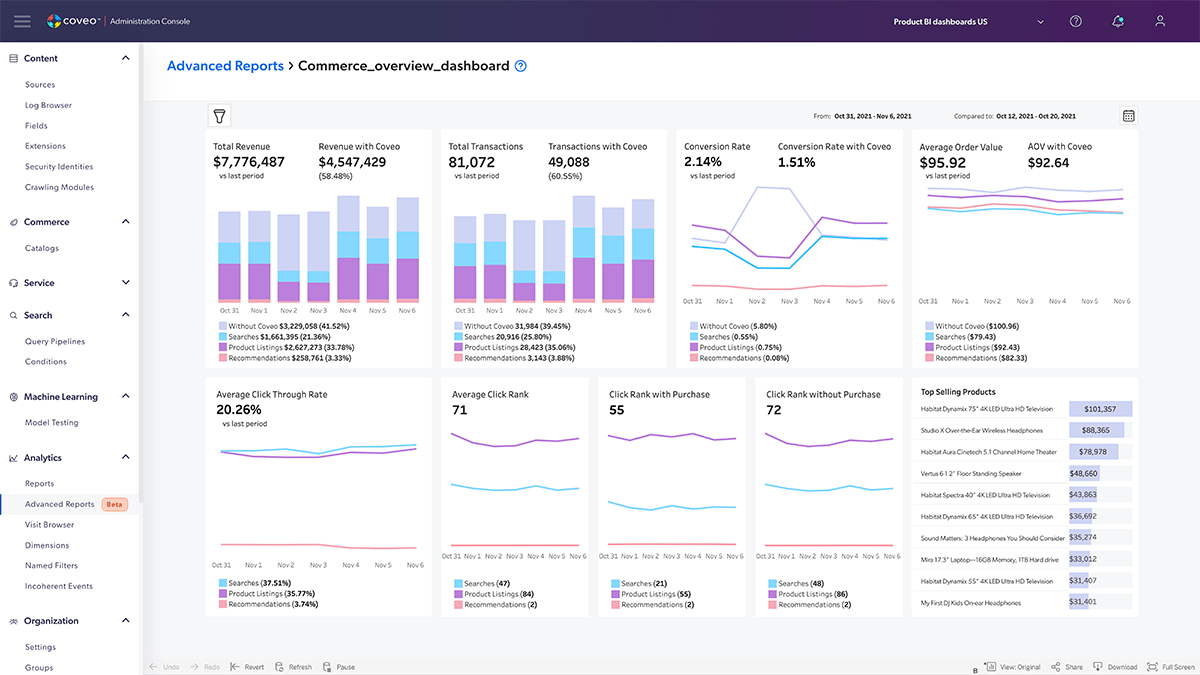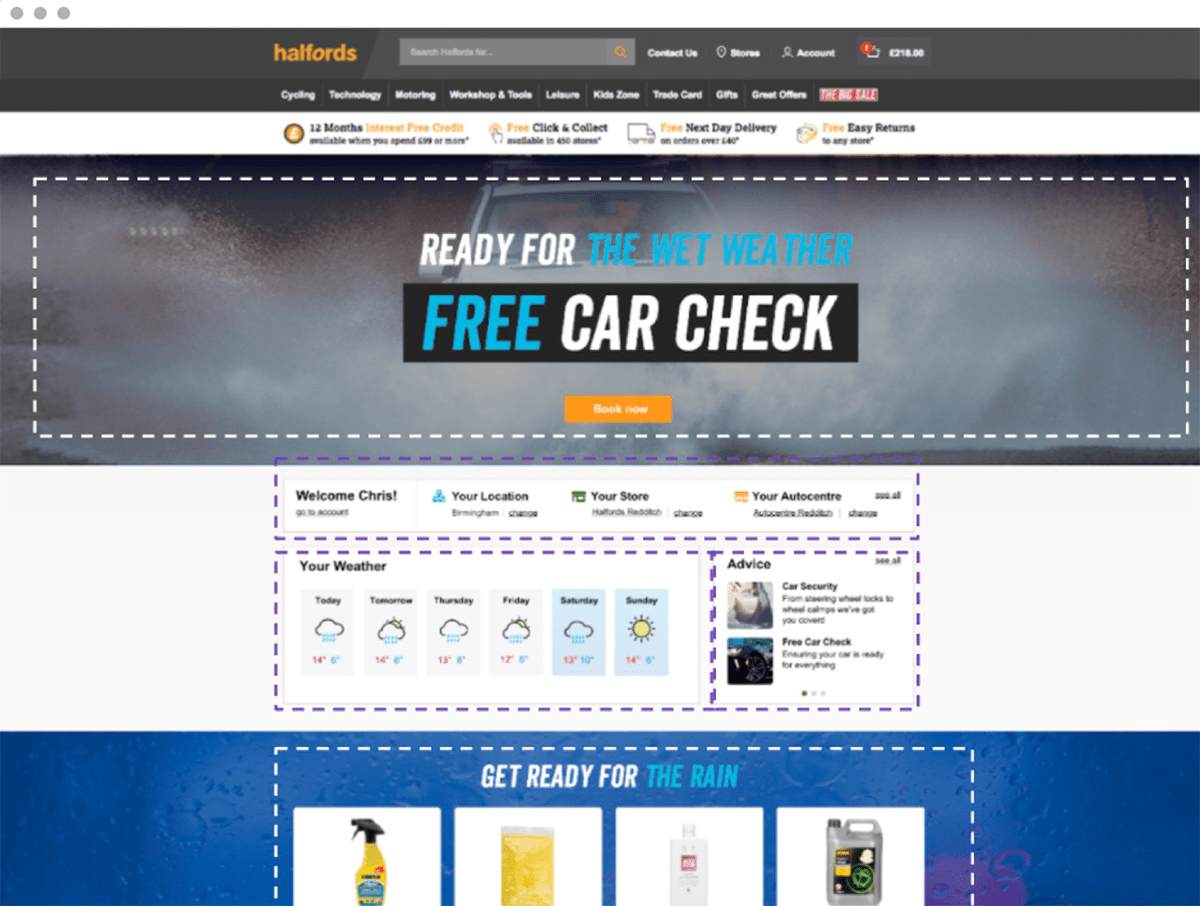How can conversion rate analytics help you stand out in the ecommerce marketplace?
Well, not to state the obvious, but ecommerce has grown a lot: McKinsey posits that we’ve jumped 10 years forward in just three months at the beginning of the pandemic. And that means competition grew, too, as shoppers across all demographics shifted their purchasing habits to align with pandemic restrictions and requirements. Those habits are likely to stick around, meaning that digital isn’t a nice-to-have—it’s a must have.
What’s the biggest takeaway? How can retailers compete with the likes of Google and Amazon?
Well, It May Not Be What You Think!
In a recent survey we commissioned, 83% of retailers reported that their most important priority was ‘acquiring new site traffic.’ Yet 57% of those same retailers stated that the majority of their customers begin their shopping journey on either Google or Amazon. So, is the answer then to throw more budget at SEM? Well maybe not — as nearly one in three also admitted that they are spending far too much on SEM efforts already.
So where does that leave us?
The answer may lie in standing out in the ecommerce marketplace by optimizing the experience you serve up to customers when they do land on your site. It’s not news to e-retailers that conversion rates are a problem that needs fixing. In that same survey, 95% of retailers acknowledged that they have an issue with high bounce rates, in fact it is their top challenge. The good news: a small incremental improvement in conversion rates can yield substantial revenue uplift and the experience is totally within a retailer’s control – unlike their Google rank.
In our last blog on this topic, we highlighted five best practices for conversion rate optimization you’ll wish you were already using.
Here we will cover two other important aspects for optimizing your conversion rates: harnessing the right analytics data and recommendations for proper A/B testing.
Harnessing the ‘Right’ Data
Your customers are telling you what they want every time they use your website’s search box. Search analytics are therefore your divining rod to understanding those wants and translating them into a killer digital experience.
To get the best insight from your data, you need to equip yourself with a search analytics platform that provides insights based on the metrics that matter most in an ecommerce setting and can also handle the complexity of today’s customer journeys.
Let’s take a closer look.

Choose (And Measure) Your Ecommerce Metrics Wisely
Analytics need to provide details on a number of relevant ecommerce-specific key performance indicators (KPIs). Measuring KPIs in isolation can be misleading and even have the opposite impact of your conversion goal.
It’s important to understand that a conversion rate metric shows symptoms. Different symptoms become visible through different metrics. You may see your average order value (AOV) increasing, only to find that the conversion rate (CR) is tanking. Alternatively, during some campaigns, you may have a higher conversion rate due to some promotions and discounts, which are accompanied by a decrease in AOV.
Revenue per visit (RPV) merges both CR and AOV into one measurable metric without leaving blind spots (i.e., RPV = AOV * CR).
Although looking at click-through rates (CTR) alone won’t tell you the entire story about the success of your conversion rate optimization initiatives, CTR remains an important conversion metric to track. For organizations where customers explore catalogs online but complete purchases in a physical store, it can be valuable to keep an eye on conversion rate and CTR.
The end of shopping’s boundaries and the rise of omnichannel commerce means that looking at average conversion rate alone occasionally can lead to partly inaccurate conclusions.
Don’t Underestimate the Value of Qualitative Analysis…
A dedicated site search analytics dashboard should enable conversion tracking and allow you to conduct valuable qualitative analyses of website visitor search behavior based on search journeys.
For instance, by looking at the list of queries used by your shoppers, you can get valuable ideas to fuel your merchandising and digital marketing efforts. Noticing the popularity of thematic words such as “healthy,” “cheap,” or “revolutionary” can drive a future marketing campaign or website copy. You can then create clickable banners with terms that get shoppers’ attention and showcase special deals, thus improving your average conversion rate.

You should also analyze your zero-result queries, because not offering products that customers are looking for is one thing, but if queries are leading to zero results even though you do sell the products, then you may have a relevance problem.
Functionality such as typo-tolerant, as-you-type search suggestions that feed on machine learning are de-facto standards in today’s market. Understanding where your search solution may be falling short can also serve as a basis to justify your case for investing in AI-powered search capabilities.
…And Ensure Your Analytics Capture the Entire Customer Journey
Customers engage with ecommerce websites across several touch points, and a single conversion event typically stems from a mix of interactions with search, category listings, and product recommendations.
Path to conversion

Web analytics solutions need to provide insights on behavior across those touch points, which requires sophisticated ways of handling event attribution.
Best-in-class solutions have recognized the need to move beyond simplistic last-touch and first-touch attribution models that assign 100% of the credit for a conversion to a single touch point in the customer journey. Your analytics solution needs to embrace a “multi-touch” model — one that analyzes and acknowledges customer behavior throughout the journey to purchase.
Multi-touch attribution refers to determining the value of each customer journey touch point that results in a conversion. In particular, we may want to determine the value of different on-site customer touch points, such as search, recommendations, and category listings, that contribute to a conversion event.
Imagine that a shopper has added a product to their cart after a search. Later, they added a second product to their cart, this time influenced by product recommendations, before converting. A multi-touch approach can easily split attribution to search and product recommendations, whereas a last-touch attribution model would only credit the last touch point of the customer journey for the goal conversion.
Ultimately this would result in the impact of search on conversions being under-reported and the impact of recommendations on conversions being over-reported.
“Multi-touch” path to conversion

Test. Optimize. Repeat.
A/B testing is critical to understanding how to drive more conversions, as well as generally determine how and what to tweak to create a given outcome.
You can apply A/B testing to a broad range of site elements, such as landing pages, banners, or online advertisements. In the context of ecommerce search, different search experiences typically serve as the variants in an A/B test. By setting up a randomized percentage allocation of visitors to each experience, you can compare the impact of each.
You get the best results by restricting the number of variations within an experience, using adequate sample sizes, and concentrating on observed trends versus day-to-day fluctuations.
While the increasing adoption of A/B testing capabilities makes it easier to embrace this culture of experimentation, A/B testing can prove causality only when this follows well-established, rigorous, scientific practices.
Here are five recommendations to keep in mind when A/B testing:
- Start with a clear question and formulate a hypothesis
- Have a big enough sample size
- Ensure random testing
- Focus on statistical significance
- Keep tests manageable
To make the most of your A/B testing:
- Choose the scenarios that you want to measure
- Set up tracking for metrics relevant to that scenario
- Metrics will vary depending on the hypothesis you’re trying to validate, so have the required data tracking in place for your hypothesis.
- Identify all conversion events with their origin to reflect on the multi-touch nature of customer interactions to reduce the chance for error in your test and increase the precision of your conclusions.
- Differentiate the versions of your test to measure the distribution between your scenarios and ensure that both your test and reporting yield accurate results.
- Complement business relevance with statistical significance by defining the sample size based on the precision you want to achieve.
- Make informed decisions based on the outcome of your tests.
A/B tests provide a quick and efficient way to validate your hypothesis and gain more knowledge around your customers’ preferences.
Ready, Set… Measure!
In the end, however, it’s not enough to just use conversion rate analytics — you’ve got to use them in a way that makes sense for your company. Experimentation should be at the heart of every business, driving decisions that provide the best customer experience possible.
In the end, this will improve both your revenue and your customers’ satisfaction.
Of course, measuring analytics is easier when you’ve got a best-in-class platform that makes parsing all that data simple. Check out Coveo for Ecommerce to get more information on how our relevance platform can grow your business.
Dig Deeper
If this article piqued your interest in furthering your conversion rate optimization initiatives, then you’ll want to check out our Ultimate Guide for Conversion Rate Optimization. In it, you’ll learn much more about each of the points briefly outlined in this article.




